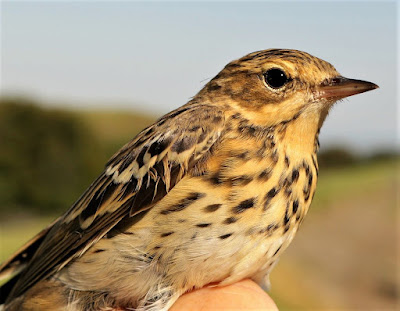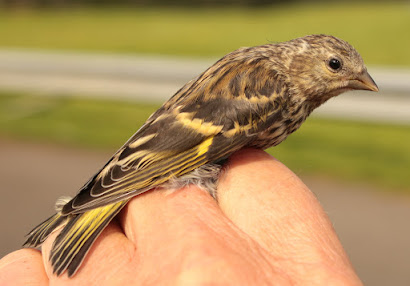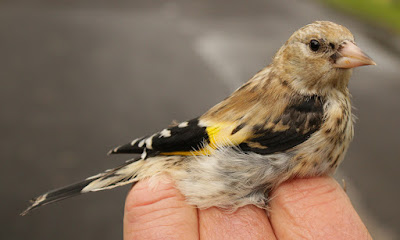The early starts aren’t too much of a problem when there’s a break with a day off to relax. Thursday became something of a lie in, sitting in the afternoon sun and then afterwards cutting the grass while recharging my solar panels in readiness for Friday’s trip to Oakenclough.
Friday’s mist over inland mosses signified a fine day ahead as the drying bales lay in wait of the tractor day ahead.
Another 0630 start saw Andy, Will and Yours Truly set up the ringing shop in the shade of the Mountain Ash trees now glowing red with early berries. The berries, a source of food for autumn birds, are not especially plentiful this year, perhaps below average and in not enough quantity to sustain hungry Redwings and Fieldfares for more than a few days.
Rowan berries
There is a belief that a bountiful rowan crop signifies a hard winter ahead, a belief that varies from place to place, country to country. We shall see, but for now and after a terribly cold spring, we are experiencing that rarity, an English Summer like the ones I recall of years 1976 and 2003.
It is possible that people of more recent generations than I might be nudged into thinking that this summer is alarming, frightening, even catastrophic rather than simply a display of variation and periodic weather changes to which the Earth and solar system is subject. I digress, but suffice to say that not everyone is a follower of The New Religion and its absurd doom laden offshoots.
The morning brought goodies in the form of visible migration of pipits and over 50 Swallows. Some of the pipits we caught, the Swallows we saw.
We caught 18 new birds of just five species - 8 Willow Warbler, 6 Tree Pipit, 2 Wren, 1 Goldcrest and 1 Robin.
We partly expected to see and hear “trepis” with the timing right coupled to clear overhead conditions suited to a notable diurnal migrant like the Tree Pipit.
Many migratory bird species fly mainly during the night (nocturnal migrants), others during daytime (diurnal migrants) and still others during both night and day.
The Tree Pipit is a splendid bird with its bright pink legs and fine-streaked yellowish breast. Dare I say it is a little more beautiful than its close cousin the Meadow Pipit?
All six trepis were juveniles of the year whereby the species’ long-distance migration to Central and Southern Africa has begun in earnest in numbers that may signify a decent breeding season north of Lancashire.
Tree Pipit
Tree Pipit
In contrast, the Willow Warbler is mainly, perhaps almost exclusively a night migrant. The new ones we caught on Friday had probably arrived overnight and then settled in to feed up in readiness for the next leg of their journeys to Africa. Likewise, all eight Willow Warblers were seen to be juveniles of this season.
Willow Warbler
Other birds noted – Sparrowhawk, 2 Raven, 6 Pied Wagtail.
We packed in at 1130 and although we had not ringed too many birds it’s always exciting to see migration in action.



































































.jpg)












